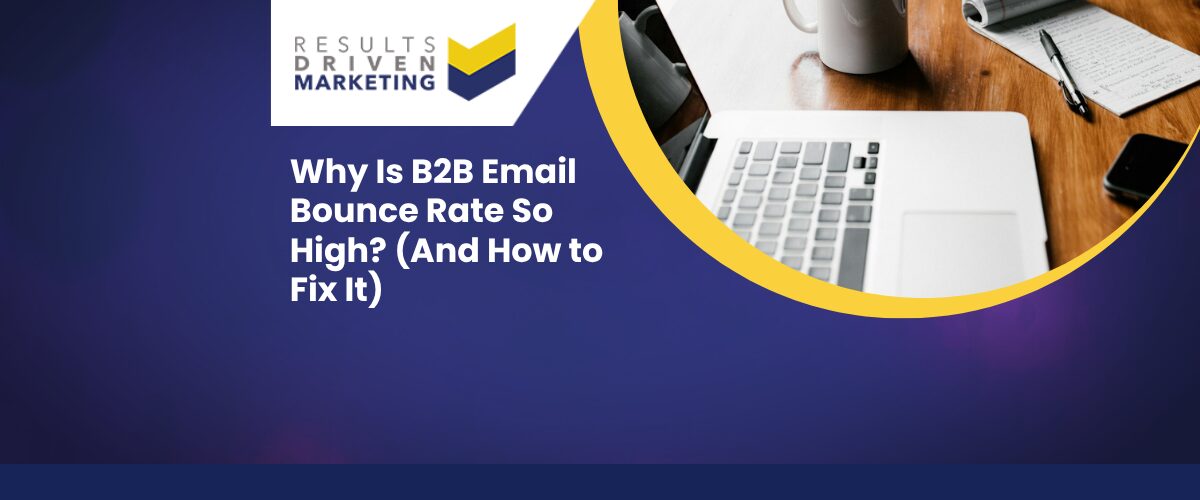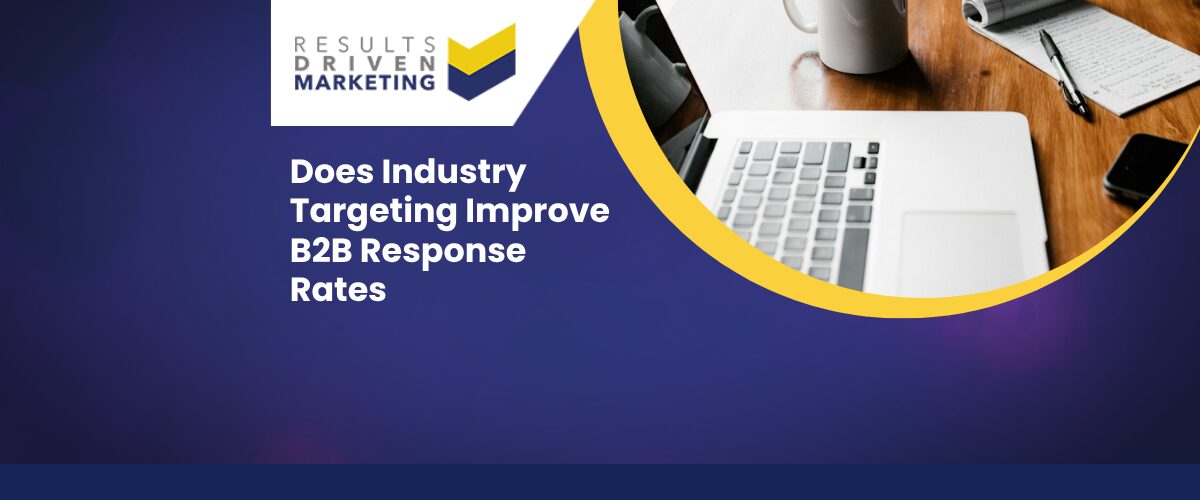
Why Is B2B Email Bounce Rate So High? (And How to Fix It)
Why is B2B email bounce rate so high? If you’ve ever run a cold email campaign using purchased data, you’ve probably asked yourself that question. You line up your targets, craft a solid message, hit send… and then see a chunk of emails bounce back undelivered. It’s frustrating, costly, and can seriously damage your sender reputation. For UK SMEs trying to generate leads and grow their customer base, high bounce rates can feel like a barrier to progress.
The good news? It’s not a mystery—and it’s fixable. In this guide, we’ll break down the main reasons B2B email bounce rates are so high, especially when using third-party data. We’ll show you what to look out for, how to protect your campaigns, and how better data and delivery practices can lead to better results. If you’re serious about reaching the right people and improving campaign performance, you’re in the right place.
Table of contents:
What Is a B2B Email Bounce Rate?
Why is B2B email bounce rate so high? Before we dive into the causes, let’s define what bounce rate actually means in the context of cold email.
An email “bounce” happens when your message can’t be delivered to the recipient’s inbox. The bounce rate is the percentage of total emails sent that fail to reach their destination. There are two types to be aware of:
-
Hard Bounces – Permanent delivery failures (e.g. invalid email address, closed domain)
-
Soft Bounces – Temporary issues (e.g. full inbox, server downtime, content flags)
In B2B marketing, especially when using purchased data, high bounce rates can seriously affect your ability to reach decision-makers. Poor sender reputation, blacklisting, and wasted spend all follow.
While a healthy bounce rate for cold B2B outreach is typically under 5%, we regularly see businesses dealing with 10–20%—or worse—due to poor data quality and outdated targeting. Let’s unpack why.
Common Causes of High B2B Email Bounce Rates
If your bounce rate feels unreasonably high, it probably is. Here are the most common reasons we see among UK SMEs running cold outreach campaigns:
Poor Data Quality
The most common culprit. Many B2B email lists are outdated or contain inactive addresses, especially if sourced cheaply or without regular updates. Staff move on, businesses close, domains expire—and if your data doesn’t keep pace, your emails hit a wall.
-
Old or invalid addresses
-
Duplicates and formatting errors
-
Data scraped or stitched together from unreliable sources
Inaccurate Targeting
Even if the email address works, it’s not much help if the recipient isn’t relevant.
-
Wrong job titles or departments
-
Broad filters that pull in irrelevant roles
-
Lists that don’t align with your ideal customer profile
Missing Compliance Checks
You need to ensure your outreach doesn’t fall foul of UK B2B regulations, particularly around GDPR.
-
Ignoring CTPS (Corporate Telephone Preference Service) risks non-compliance
-
Targeting sole traders or partnerships without legal grounds for contact
-
Damaged trust = higher bounce and complaint rates
Technical Delivery Issues
Sometimes the problem isn’t the list—it’s how the email’s being sent.
-
No domain warming or authentication setup (SPF, DKIM, DMARC)
-
Sending from blacklisted or new domains
-
Spam-like content triggering soft bounces or junk folders
These issues stack up fast—and every one of them erodes your ability to land in the inbox.
How to Reduce Your B2B Email Bounce Rate
High bounce rates aren’t inevitable. With the right approach to data, targeting, and delivery, you can protect your sender reputation and get more messages into inboxes. Here’s how:
Start with the Right Data Source
Everything begins with the list. If you’re using unreliable, outdated data, no amount of email wizardry will save the campaign.
-
Choose suppliers who build lists from trusted UK sources
-
Prioritise regular data updates and quality checks
-
Ensure filters like industry, job title, and location are properly applied
A high-quality, well-targeted list does more than reduce bounces—it improves your entire outreach funnel.
Clean and Segment Your List
Don’t treat your data as “one and done.”
-
Remove risky entries: role-based emails (info@, sales@), known bounces, duplicates
-
Segment by sector, seniority, or geography for tailored messaging
-
Match your list format to your CRM or email platform for smooth imports
Regular list maintenance keeps bounce rates low and engagement high.
Improve Campaign Delivery
Even great data won’t perform if your technical setup is off.
-
Warm up domains before high-volume sending
-
Use email tools that support authentication protocols (SPF, DKIM)
-
Avoid trigger words or spammy formatting (e.g. all caps, lots of links)
Think of your sender domain like a credit score—protect it.
Monitor and Optimise Campaigns
Don’t set and forget.
-
Track bounce reports closely
-
Pause and review lists or segments showing high failure rates
-
Create feedback loops between sales and marketing to flag poor-quality data
Refining your approach over time makes every campaign stronger.
Why Choose Results Driven Marketing
When bounce rates start creeping up, the source of your data matters more than ever. At Results Driven Marketing, we specialise in helping UK SMEs run effective, compliant, and low-bounce B2B campaigns—starting with the list.
Here’s what sets us apart:
-
Accurate, Targeted Data: We build lists from 2,000+ UK sectors, filtered by job title, company size, industry, and more—so you only contact the right people.
-
Ongoing Data Updates: Our data is refreshed with over 700,000 updates every month, keeping your lists clean and current.
-
40-Point Quality Check: Every record goes through rigorous validation before it reaches your inbox.
-
CTPS-Checked Lists: We check all records against the Corporate Telephone Preference Service to support compliance in multi-channel campaigns.
-
Fast, Secure Delivery: Your data is delivered via password-protected Excel/CSV within 24 hours—ready to use.
-
Responsive, Real Support: We’re not a faceless data seller. Our team works with you to get better campaign results.
If you’re looking to reduce bounce rates and improve your cold outreach results, take a look at our email lists or contact us to speak with a B2B data expert.
Final Thoughts: Turn Bounces into Better Results
So, why is B2B email bounce rate so high? It usually comes down to poor data, misaligned targeting, and overlooked delivery issues. The good news is, once you know what’s causing the problem, you can fix it—and see real improvements in your outreach performance.
By starting with cleaner, better-targeted data and following simple best practices, you’ll protect your sender reputation, reach more decision-makers, and generate more leads from every campaign. And if you’re working with a reliable data supplier, bounce rates shouldn’t be something you have to worry about.
At Results Driven Marketing, we’re here to help UK businesses like yours move from frustrating campaigns to consistent results. Whether you’re running cold email, telemarketing, or direct mail—we’ve got the data, experience, and support to make it work.
Results Driven Marketing
Accurate B2B Marketing Lists | GDPR-Compliant Data | Tailored Outreach Support
📞 0191 406 6399
📍 Newcastle, UK
🌐 rdmarketing.co.uk





